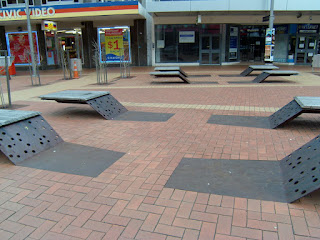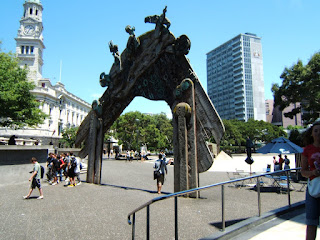







Architecture should speak of its time and place, but yearn for timelessness.-Frank Gehry
 A new section to Creative Collision - creative travel. To wander and seek those moments of creative inspiration, or someone else's. Attention to detail and an instant of composition is all that is needed. The bigger picture, or the tiniest object it doesn't matter. Intrigue matters.
A new section to Creative Collision - creative travel. To wander and seek those moments of creative inspiration, or someone else's. Attention to detail and an instant of composition is all that is needed. The bigger picture, or the tiniest object it doesn't matter. Intrigue matters.




 I found two guitar photos in my collection (of creative goodness!). These two are in such a strong contrast even though they have that one common element of the guitar. The top is a photo of Heidi Klum for the Be An Angel photoshoot. The bottom one is a sensuously black image, by Obsidian-Fox, called JRock.
I found two guitar photos in my collection (of creative goodness!). These two are in such a strong contrast even though they have that one common element of the guitar. The top is a photo of Heidi Klum for the Be An Angel photoshoot. The bottom one is a sensuously black image, by Obsidian-Fox, called JRock.

Auckland, the City of Sails. Well at least we have something (although our marinas are fast becoming exclusive with hoards of en suite luxury boats). The canvas sail at the International Airport, that doesn't count.
Token gestures seem to be a theme in Auckland. Halfway down Queen Street there's a single sculpture with some Maori suggestions. It's an effort on the art side of things I guess, but much too stagnant. What does it do to the urban fabric? Nil. Does it affect the ebb and flow of the busy Aucklanders that stream through the footpath? No, it opts for withdrawing to the side, getting in no one's way, as if in shame.

Wellington does many things to make their art interact with the city. The show always seems to take place in the centre of their large pedestrian walkways. Splashing bucket fountains, austere symbols strewn alongside the port, water features that encourage people to sit along the cascading waters - whether if it is "good art" is not the point. Having it there in an urban context makes all the difference to it's affect on the city environment.

Aotea Square, which is currently going through the long, painstaking elective surgery of planting a few more pohutakawas and a new concrete foundation, used to have some strange pieces. The middle of the square sported a weird water feature that resembled something alike to a block of bronze that wanted to be a defunct crystal. At the entrance of the square, there was a large Maori carving gateway. I can imagine one of those Japanese tourists seeing it and saying, "hey, its like a Shinto gate, but the NZ version." That effect is good! Let the mysteries of our little world make the world seem like a cooler place to explore. Let's ignore the Gucci and the (omg) Louis Vuitton handbag for $9999 and invest in some better public atmosphere.


A stunning piece of installation work that I happened across on Twitter (via @bklynartprjct). To be frank, very little installation work moves me, but to think that this piece by Kumi Yamashita stands in Nanba Parks Tower, Osaka, makes me glad such a genre of art exists.
"Installation art describes an artistic genre of site-specific, three-dimensional works designed to transform the perception of a space." - Misty BelardoIn this elegant way - a play of light and shadow on the plane of the wall and transparent barricade - the 3D transformation almost takes on the qualities of an optical illusion. To me, this piece seems quite playful and I'd like to know what the artist's intention was with this piece. Puzzlement? A message? Or maybe the self expressive action of obsessing over every detail to ensure the piece comes off as a mystery?
